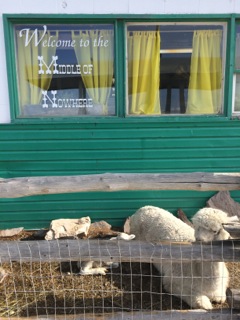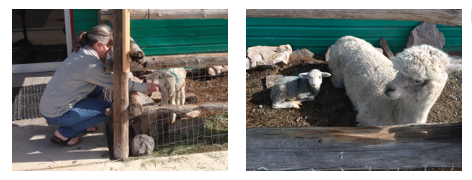Lori Sabo
 June 6, 2014
June 6, 2014
I was on a road trip with my dearest friend when we stopped in the middle of nowhere, which in this case was somewhere in Idaho, for gas. While my friend filled the tank, I jumped out of the car to see the animals featured in the storefront.
I was delighted to see a little one, and even more pleased that for a quarter I could purchase a small handful of critter food and feed them. After racing back to the car to scrounge for 25 cents, I purchased my pellets, carefully picking up the ones that scattered to the concrete.
The baby came over immediately. I fed it most of the pellets, saving a few for the mother, who seemed surprisingly unconcerned that I was so close to her infant.
Once the treats were gone, I entered the gas station store to wash my hands. While visiting with the owner, I asked if the critters were llamas or alpacas, to which she replied, "Alpacas. But the little one is a sheep."
What?!?!
I am not a city girl, and I have seen sheep before; I just hadn't looked closely enough. I laughed with embarrassment and then went out to confirm the details I had so shockingly missed the first time. Yes indeed. It was a lamb. No wonder the mother wasn't concerned. She wasn't his mother at all.
 |
 |
It made me think about close reading. It can be easy to miss things when we don't stop and examine text more closely. Unnoticed details often lead to weakened comprehension. If we pause and pore over worthy portions of text, the entire experience will be richer, clearer, and more meaningful.
The secret, when teaching our students to read closely, is to select text that is truly worthy, and to reread and discuss just enough to bring deeper understanding and pleasure. I recently heard Chris Lehman and Kate Roberts, authors of Falling in Love with Close Reading (2013), say that joy or death can come from the work we do. And in Notice and Note: Strategies for Close Reading (2012), Kylene Beers and Robert E. Probst say it is about rigor, not rigor mortis.
As we endeavor to teach and scaffold students in close reading activities, let's keep in mind that if they love it more when we are finished, we did it right. If they hate it, we did it wrong. Together, we'll learn to pause, pay attention, and deeply and joyfully understand.





